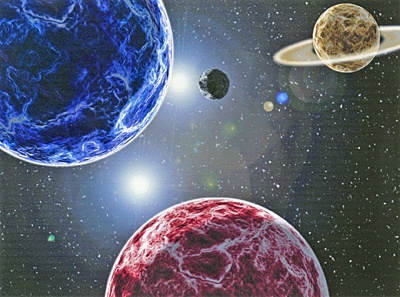All Nonfiction
- Bullying
- Books
- Academic
- Author Interviews
- Celebrity interviews
- College Articles
- College Essays
- Educator of the Year
- Heroes
- Interviews
- Memoir
- Personal Experience
- Sports
- Travel & Culture
All Opinions
- Bullying
- Current Events / Politics
- Discrimination
- Drugs / Alcohol / Smoking
- Entertainment / Celebrities
- Environment
- Love / Relationships
- Movies / Music / TV
- Pop Culture / Trends
- School / College
- Social Issues / Civics
- Spirituality / Religion
- Sports / Hobbies
All Hot Topics
- Bullying
- Community Service
- Environment
- Health
- Letters to the Editor
- Pride & Prejudice
- What Matters
- Back
Summer Guide
- Program Links
- Program Reviews
- Back
College Guide
- College Links
- College Reviews
- College Essays
- College Articles
- Back
The Elegant Universe by Brian Greene
Pick up something next to you right now. Anything. Now, hold it close to your face and study it closely. What is it made out of? Plastic? Metal? What are plastics and metal made out of? You might say atoms and molecules, but what are atoms made out of? Those of you with a little background knowledge may answer protons, neutrons, and electrons. Still, a few of you may go further and say that protons, neutrons, and electrons are made up of elementary particles, which are neatly divided up in the Standard Model of Particle Physics. With whimsical names like quarks and muons, these particles are indivisible, point-like, and zero-dimensional. They make up everything around you. Everything that you can touch and see and the object that you are holding in your hand right now.
Except there’s a problem with that model right now: if you dig deep into the math, it makes physics incompatible. Currently, the two pillars of modern physics are the theories of relativity and quantum mechanics. However, if we combine their equations, we get nonsense answers like infinity. Physics is inconsistent, and theoretical physicists are scrambling to find a way to make quantum mechanics, the theory of the very small, work with relativity, the theory of the very large. This new theory that would unify modern physics—the so-called “theory of everything”—is one of the greatest challenges facing scientists today. In his book, The Elegant Universe, Brian Greene explores one of the most promising candidates for the theory of everything: string theory.
String theory postulates that instead of being zero-dimensional, the elementary particles of the universe are made from strings—one-dimensional objects that vibrate like guitar strings. Each type of vibration produces a different particle, just as plucking different guitar strings produces different notes. It turns out that if we think of particles as one-dimensional strings, the problems between relativity and quantum mechanics are erased; the large and the small can be reconciled.
Greene brilliantly explains this complex and mathematically advanced theory to readers that have little to no background in physics. His writing is clear, simple, and rigorous. Its tone is a delicate balance between academic and conversational, simultaneously making the reader feel relaxed while giving a true conceptual understanding of string theory. Sprinkled with humorous anecdotes and colorful analogies (such as an imagined land of one-eyed humans), he makes theoretical physics as light and easy as whipped cream.
While it is easy for popular science books to devolve into monotonous lectures, Greene presents string theory as a story. In the beginning, he sets the scene with the bases of string theory—relativity and quantum mechanics—and introduces the conflict: the two pillars of modern physics are incompatible with each other. The book is centered around resolving this conflict, a classic form of story structure. Physicists scramble to find a solution to this crisis before landing on string theory. Then the plot thickens as they discover the intricacies and depths of the theory, with new information and clues arising in each chapter that only raise more questions. You find out that string theory suggests that there are not four, not five, but eleven dimensions in the universe. You are astonished to learn that string theory, which is designed to unify two theories, is itself fragmented into five theories that needs to be unified into a mega-theory, dubbed “M-theory”. By the end, you see the immense scope and depth of string theory, and you are hopeful that it will mature and truly become the theory of everything.
Above all, Greene makes you feel giddy, childlike wonder. Reading his book is like looking into a telescope for the first time: you see up close the vastness of the universe around you, and you dream about worlds light years away. The theory of everything is like the faraway stars you see in the night sky. The distance may seem insurmountable, but you are optimistic that one day humans will be able to reach it, and just that thought makes your imagination soar.

Similar Articles
JOIN THE DISCUSSION
This article has 0 comments.
